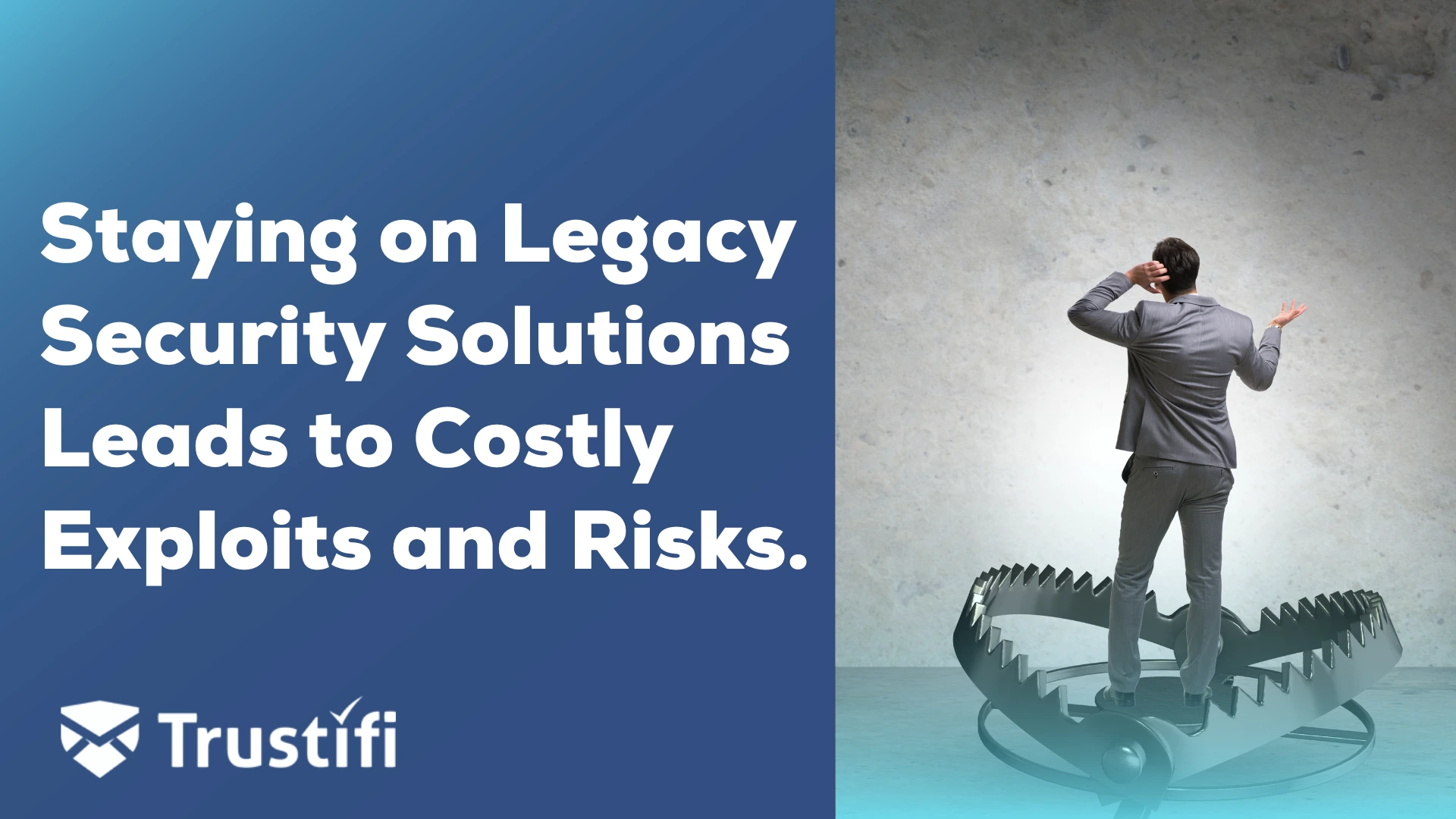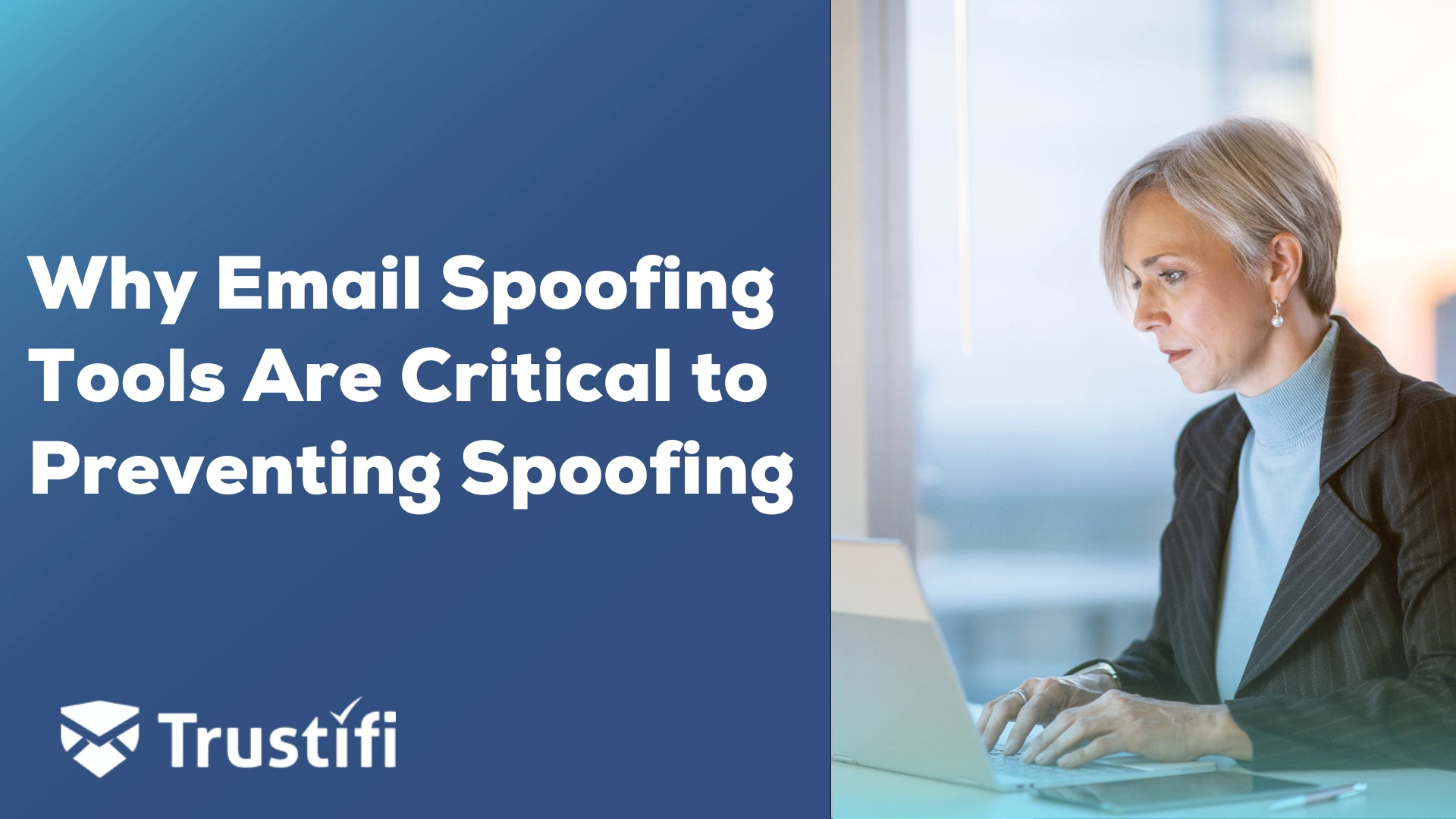The Cybersecurity and Infrastructure Agency (CISA) has issued an alert regarding a SUBMARINE Backdoor malware variant. Organizations could follow the industry’s best practices, phase out their legacy ESG devices, and move forward with a cloud-based consolidation email security strategy from Trustfi.
The Risk of Keeping Outdated Technology Deployed.
The Cybersecurity and Infrastructure Agency (CISA) has issued an alert regarding a SUBMARINE Backdoor malware variant. Hackers used this malware in attacks that exploited the vulnerability CVE-2023-2868 in legacy email security gateway (ESG) appliances. Organizations that choose to remain on obsolete technology, legacy apps, legacy operating systems, and mobile devices may face cyber attacks from malicious actors that surpass the security capabilities of the devices.
Organizations attempting to interconnect outdated legacy systems with next-generation modern security solutions realize this strategy causes more harm and increases security operating costs.
They should deploy a modernization process between newer and older legacy IT systems. A core component of the modernization process should entail a platform consolidation strategy.
Several cloud email security platforms, including Trustifi, have invested in artificial intelligence(AI) and machine learning(ML) capabilities to protect clients from next-generation cyber-attacks. Hackers also invested in AI and ML to increase their attack velocity and complexity to cause business disruption.
Outdated hardware and legacy software solutions are at a higher risk of cyber-attacks because vendors prioritize up-to-date models for upgrades and updates. These updates protect against the latest malware and critical vulnerabilities. However, relying on old technology may take time and effort. This issue places the organization in a risky position by becoming exposed to potential threats.
Security Vulnerabilities of Legacy Systems.
Keeping outdated legacy technology can increase the organization’s vulnerability to cyber-attacks and data breaches. These security risks are primarily because of the manufacturer’s inability to provide timely security patches, new features, and industry-specific end-of-life support.
Their manufacturers may not support legacy systems’ security fixes because of discontinuation, which can cause limited help for troubleshooting software issues. Third-party software vendors may offer support, but availability may decrease as technology becomes outdated. Leaving these critical legacy systems unpatched often results in security breaches and reduced productivity for the organization.
Old systems are vulnerable to cyberattacks because they lack modern security features and tools.
Another critical concern with keeping legacy technology as part of the organization’s security posture is the availability of talent with the experience to maintain these devices. For example, what happens to the device if a support engineer who was the single source of support for the legacy email security gateway leaves the organization? Who will maintain this, especially when the device needs patches and updates?
Access to support engineers with working knowledge on a legacy end-of-sale(EOS) or end-of-support(EOS) device is challenging for the organization. With fewer IT professionals available to support legacy devices, this could be enough of an exciting event to replace these devices with various modernization options.
Exploits Caused by Not Investing in Modern Solutions.
Please replace legacy security devices to avoid placing the organization vulnerable to meeting compliance and privacy mandates. Several compliance mandates, including PCI-DSS, HIPAA, and GDPR, require proof that all adaptive controls are operational, updated, and tested by third-party auditors. Specific to GDPR, the European Union (EU) sets rules for handling information. Outdated technology can pose compliance problems for businesses as older systems may not accommodate newer regulations.
Compliance mandates and privacy regulations also require that all devices maintain the current patch levels, verified by a vulnerability scanner or a third-party penetration test.
Patch management can be challenging for organizations of all sizes. Networks can be costly and complex, encompassing various applications and environments. Updating software and applications can be overwhelming, especially if done manually. Legacy infrastructure further complicates the process.
Many organizations often avoid patching legacy devices because the machine will not reboot and cannot return to a steady state. This challenge is expected in the operational technology for water systems and power control units.
Maintenance Costs for Legacy Technologies.
Upgrading software is usually cheaper than maintaining outdated software.
Investing more money in older systems will bring them up to a different level of quality than newer models. Therefore, you are using your funding on something other than technology that will meet your required standards.
Comprehensive Protection Against Cybersecurity Threats.
Before an organization considers replacing a legacy security technology, it could engage a cybersecurity consulting firm to assess the entire security infrastructure. Most next-generation cloud-based solutions like Trustifi offer an array of adaptive controls, fully integrated and centrally managed by a single console.
Platform consolidation is essential for organizations to help simplify their security strategy, reduce complexity for their security operations teams, and future-proof by leveraging AI and ML capabilities. Trustifi’s email security offering extended before just inbound shield protection. The company offers its clients the ability to access additional features without re-booking their cloud instances.
These additional features include:
- Data Tokenization
- Email Encryption
- Data loss Prevention
- Account Takeover Protection
- Multi-factor Authentication Support
- Anti-phishing
- Anti-malware
- Email archiving for e-discovery
These capabilities become enabled with a single click, supporting various global and national compliance mandates. Organizations leveraging platform consolidation will save valuable capital by increasing their security and protection strategy.
Why Trustifi?
The most valuable asset to any organization, other than its employees, is the data in its email–and Trustifi’s fundamental aim is keeping clients’ data, reputation, and brand safe from all threats related to email. With Trustifi’s Inbound Shield, Data Loss Prevention, and Email Encryption.
With Trustifi vendor consolidation and reduction of resource cost allocation, they align with the needs of small and midsize clients while not compromising on email protection, all with a single pricing model.
Trustifi Single Console for Ease-of-Use Management.
With a limited IT and security staff at most organizations, the clients need security solutions to manage more efficiently while meeting HIPAA, PCI, and other compliance mandates.
Trustifi’s Email detection and response (EMDR) offers clients access to experts to assist with the implementation.
Culture
As a global cybersecurity provider of both inbound and outbound email protection. Trustifi currently supports customers from countries including the USA, Canada, Brazil, the Dominican Republic, the UK, the Netherlands, India, the UAE, China, Japan, Cyprus, the Philippines, and more. The company has also developed “One-Click Compliance” capabilities that cater to world security regulations, including PDPO for Hong Kong, POPI for South Africa, GDPR for Europe, and LGPD for Brazil.



